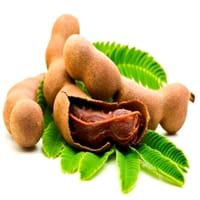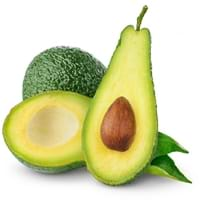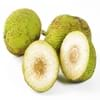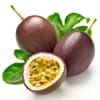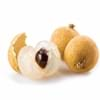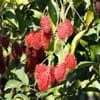Health Benefits
Boosts immune system, Boosts respiratory health, Cancer prevention, Digestive aid, Piles treatment
Cancer prevention, Natural detoxification, Osteoporosis prevention, Protection from chronic disease
General Benefits
Beneficial in improving nerve function, Protects against parasites and worms, Relieves pain
Boosts immune system, Controls blood pressure, Digestive aid, Improves eye vision, Maintains healthy cholesterol level
Skin Benefits
Anti-aging benefits, Brightens and lightens complexion, Exfoliates skin, Hydrates skin, Treatment of dark spots
Brightens and lightens complexion, Reduces wrinkles, Skin cleansing, Treatment of dark spots
Hair Benefits
Prevents hair loss
Acts as moisturizer, Good conditioner, Protects hair, Regulates hair growth, Rejuvenates scalp, Remedy for split ends, Shiny hair, Softening mask
Allergy Symptoms
Abdominal pains, Breathing difficulty, Dizziness, Eczema, Fainting, Hives, Itching, Nasal congestion, Swelling of face, Tingling sensation in mouth, Vomiting
Abdominal pains, Anaphylaxis, Inflammation, Itching, Latex Allergy, Nasal congestion, Skin Rashes, Swallowing difficulties, Swelling, Upset stomach, Vomiting, Wheezing
Side Effects
Decrease in blood sugar levels, Induces acid reflux, Allergic reaction, Tooth decay, May form gallstones
Allergic reaction, Hypersensitivity, Weight gain
Best Time to Eat
Along with meal, As a snack in the late afternoon, Don't consume at night and before bed, Strictly avoid empty stomach
Along with meal, As a snack in the late afternoon, Don't consume at night and before bed, Don't eat after meal
Vitamin B5 (Pantothenic Acid)
Vitamin C (Ascorbic Acid)
Vitamin K (Phyllochinone)
Calories in Fresh Fruit with Peel
Not Available
Calories in Fresh Fruit without Peel
Not Available
Calories in Canned Form
Not Available
Not Available
Type
Tropical
Berry, Tree fruit, Tropical
Season
Spring, Summer
Summer
Varieties
PKM 1, Urigam, Hasanur, Tumkur prathisthan, DTS 1 and Yogeshwari
Bacon, Fuerte, Gwen, Hass, Lamb Hass, Pinkerton, Reed and Zutano
Color
Brown, Reddish-brown
Dark green
Shape
Curving Cylinder
Oval
Origin
Africa
Mexico, Central America
Soil Type
Loam, Sandy, Sandy loam, Well-drained
Decomposed Granite, Limestone, Sandy loam, Well-aerated
Climatic Conditions
Humid to dry, Rainfall, Warm to hot climate
Humid, Without frosts
Facts about
- Tamarind is used to prevent body odor.
- African children use the tamarind seeds in games.
- No cases of tamarind toxicity or allergy reported till date.
- The oldest living avocado tree is found in University of California and was planted in 1879.
- Avocados can be swapped for butter in Baked Goods Recipes.
- Avocado ripens more quickly with a banana or an apple around.
Top Producer
India
Mexico
Other Countries
Africa, Australia, Brazil, China, Mexico, Nigeria, Sudan, Taiwan
Chile, China, Colombia, Dominican Republic, Indonesia, Kenya, Mexico, Peru, Rwanda, United States of America
Top Importer
United States of America
United States of America
Top Exporter
Thailand
Mexico
Botanical Name
Tamarindus indica
Persea Americana
Synonym
Tamarindo, tamarindus
Persea Gratissima
Subkingdom
Tracheobionta
Tracheobionta
Division
Magnoliophyta
Magnoliophyta
Class
Liliopsida
Magnoliopsida
Subclass
Rosidae
Magnollidae
Family
Fabaceae
Lauraceae
Species
Tamarindus indica
P. Americana
Generic Group
Tamarind Sub
Laurel
Compare Tamarind and Avocado
It is important compare Tamarind and Avocado as both the fruits have a different nutritional value. Their comparison can be done on the basis of their vitamin and mineral content, calories, benefits as well as characteristics, making it easier for us to choose the best fruit for our diet. Their general health benefits are as follows:
Tamarind Benefits: beneficial in improving nerve function, protects against parasites and worms and relieves pain.
Avocado Benefits: boosts immune system, controls blood pressure, digestive aid, improves eye vision and maintains healthy cholesterol level.
Fruits are also used as a remedy for various hair problems. The hair benefits of Tamarind are: prevents hair loss and hair benefits of Avocado are: acts as moisturizer, good conditioner, protects hair, regulates hair growth, rejuvenates scalp, remedy for split ends, shiny hair and softening mask. Some fruits are known to cause allergic reactions. The allergy symptoms of first fruit are: abdominal pains, breathing difficulty, dizziness, eczema, fainting, hives, itching, nasal congestion, swelling of face, tingling sensation in mouth and vomiting and the symptoms of second fruit are: abdominal pains, anaphylaxis, inflammation, itching, latex allergy, nasal congestion, skin rashes, swallowing difficulties, swelling, upset stomach, vomiting and wheezing. Get sorted Tamarind vs Avocado comparison with the help of fruit comparison tool by fruitvs.com.
